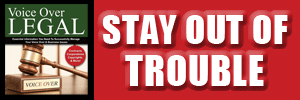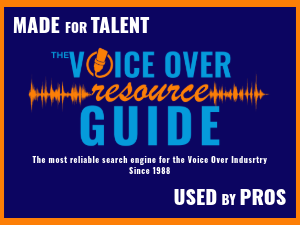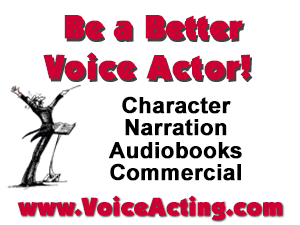|
MARKETING For Your Voice Over Clients: How To Match And Balance Voice With Background Music January 16, 2015  Note: This article informs voice over clients about the critical need to match voice and music in projects. It's valuable advice for you to pass along to your own clients ... Note: This article informs voice over clients about the critical need to match voice and music in projects. It's valuable advice for you to pass along to your own clients ...By Carmi Levy Senior Writer, Voices.com Choosing the right music for your brand - and ensuring it matches up to the voices and spoken-word content you expect to use in any project - can make all the difference in crafting successful audio-based messages. Everything must work together to create the soundtrack of your company. When selecting music for your project, a number of factors come into play that will determine how effective your production will be. Key considerations include:
MATCHING TO YOUR BRAND ... Before you commit to music, a particular style or voice type, be sure to answer the following questions to shape a framework for you to work from:
1. Your Brand Sound You've probably given some thought to brand sound without even realizing you were doing so. Knowing what your brand sounds like means first knowing about your brand.
Your brand lives in words, pictures and yes, even sound. Take a step back and think about the words and what they represent. How might they come across when put to music? If you're an innovative, exciting and youthful brand, music choices might be more upbeat, bright and dynamic. If you're better known as being trustworthy, authoritative and reliable, the music you choose might reflect more of a corporate sound paced at a moderate speed featuring more traditional orchestration. 2. Match Music with Your Goals Every project is different. That said, the music you choose should always represent your brand while matching up with the sort of presentation you are creating. Music choices will vary depending on application. If you're producing a radio commercial, the music should align with what the audience of that particular station expects to hear. If you're airing a spot on a country music station, the opening music from an opera by Mozart may not do the trick. The goal is to meet the audience where they are. The more closely you can align your music choices with the tastes or sentiments of the people meant to hear them, the better. When working on a production that is meant to teach someone, you may use less music or more subdued music throughout to better maintain focus on the instruction. Make sure that the music you choose ultimately supports the message and plays to its strengths. 3. Choosing a Voice The human voice is an instrument. As we know, voices come in all shapes and sizes with no one voiceprint being alike. The four primary classifications of voice are Soprano, Alto, Tenor and Bass. Think of a choir. Within these sections, voices will have different types of tone color and characteristics. Some voices have a larger presence while others are less pronounced. Some voices will have more vibrato whereas others produce a purer tone. Where one voice may have a lightness to it, another could sound the trumpet for battle. Recognizing the uniqueness of a voice is important, but more so, you'll want to know if that voice, and the way the talent is interpreting your script, goes well together. BALANCE VOICE AND MUSIC Balancing the voice with the music is also important. Remembering that the voice is another instrument in the mix, you need to find a way for the voice to act as a soloist in your production, allowing for the voice, which is the vehicle for the words, to stand out and do the job it has been tasked with. You may have heard of Hertz in relation to sound measurement. Hertz, named for the German physicist Heinrich Hertz, measures the number of cycles per second. Where the human voice is concerned, this means the number of times the vocal folds vibrate per second.
For example, you might be familiar with A440, also known as Concert Pitch. As an orchestra prepares to tune, the principal violinist will play this pitch to help others in the ensemble tune their instruments. DON'T DROWN OUT VOICE If you are working with a voice artist who has a lighter voice, perhaps in the treble range of a soprano or alto, you'll want to make sure that the instrumentation used doesn't drown out the voice. Having too much treble in this case might result in the treble voice getting lost in the chorus of other voices such as the treble of the piano or violin. Choose your music first and then find a voice talent whose instrument and interpretation of your script fit well. You could start with the voice and then find appropriate music, but usually people know what music they want to work with before hiring a voice talent. The more you know about what you are aiming to do, the better equipped you are to bring the right people -and their instruments! - together to get the job done. --------------------- ABOUT CARMI Carmi Levy is a technology analyst, journalist and Senior Writer at Voices.com, the voice over industry website that connects businesses with professional voice talent. At Voices.com, Levy is responsible for engaging Voices.com's audience in innovative ways and positioning the organization as a thought leader in the voice community and beyond. Web: www.Voices.com |
As of the NEW website launch, 03/22/2012








.png)

The main thrust of any corporate communication is the message. The goal – after the script is approved – is to first find a voice-over talent that CORRECTLY interprets the words of the writer so that the message is accurately delivered. Music should match the mood or feeling of the production's message but, unless it is a piece scored specifically for a production or is a part of recognizable corporate identity (a theme), while it may initially set the stage, it should then move to the background to support the voice-over.
In rare or specialized cases, music may have already been selected and the producer may send prospective voice talents a sample of it to see if the talent can attempt to match the pacing and/or mood, but in most cases, that's putting the cart before the horse. Many more hours will be spent (aka there goes the budget) attempting to find a voice talent whose sound complements the music and, even if successful, the talent may not be able to properly interpret the script. Let's not forget that the message is the whole point of a corporate video.
With regard to "balancing," as a support element, music should as closely as possible match the pacing of the narration (play the narration and simultaneously audition musical selections against it), and should NEVER interfere with the narration, in terms of pacing or loudness. If the message is not immediately and clearly understood, the production and all effort creating it is pointless.
A final opinion based on decades of experience from both sides of the glass: unless they have a unique relationship with the client and/or producer, voice talent have no place making recommendations about music or any other facet of the production, unless asked for their input. They are hired to provide an accurate read to deliver the message.
And, I'd add two more thoughts to the mix:
First -- HOW is your intended audience going to hear your finished audio? A tiny guided tour speaker will need a different level of clarity than a movie theater.
Second -- Does your intended audience have any HEARING CHALLENGES? I frequently produce audio for seniors with hearing loss. A music bed on audio for those with hearing deficits needs to be unobtrusive, otherwise your target listener can't hear the words. Again, THANK YOU for this helpful summary!